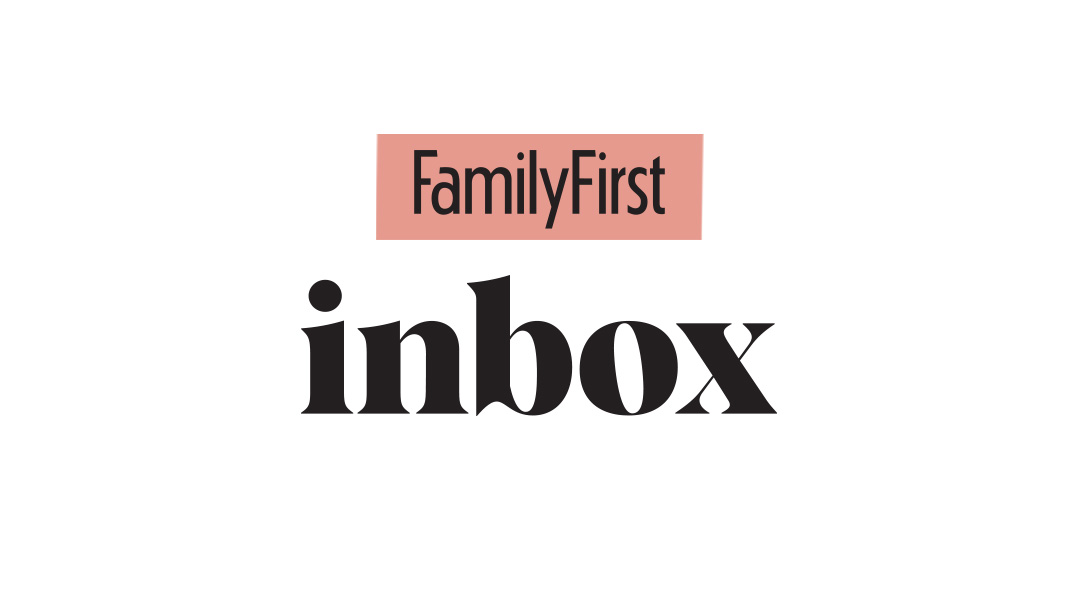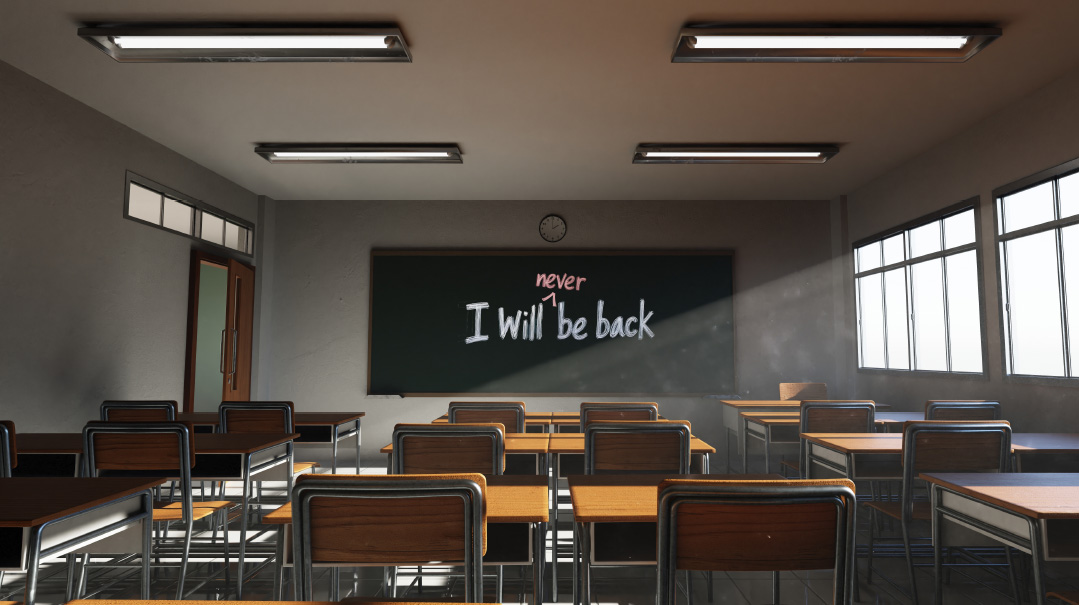Family First Inbox: Issue 767

"Unfortunately, the term (and concept) 'psychosomatic' has gotten a bad rap"

Single at 71 [With Flying Colors / Issue 766]
I wasn’t the world’s youngest kallah the first time, a 26-year-old marrying a 30-year-old. But after 45 years of marriage, the last five of which were filled with the endless stream of doctors and hospitalizations my husband needed, I found myself single again.
Yes, I was 71. But after the shloshim, friends and relatives urged me to start to consider looking for a new relationship. You’re still so young! So pretty! So youthful! So funny! And, thanks to Shevi, so blonde!
Corona gave me the opportunity to really think about this, and compare it to dating the first time around. Here are some of my comparisons:
Then: Does he go to minyan three times a day?
Now: Is he physically capable of going to minyan three times a day? Unaided? With a cane? With a walker?
Then: Which hechsher does he eat?
Now: Which foods give him heartburn?
Then: Does he go to work?
Now: How often does he go to a doctor?
Then: How many children would he like to have?
Now: How many children does he have? Will they hate and/or resent me?
Then: Does he have a regular time for learning?
Now: Can he read the small print in the Gemara?
But, not to worry. All of the above is moot. With all my youth, etc., I have had zero dates.
So, I wish all the single women out there hatzlachah. They should find their basherts and have full and wonderful lives, and soon. May this be the year all their dreams come true.
Name Withheld
About ADHD [Just Me or ADHD? / Issue 765]
What an incredible thing to open up a frum magazine and find eight pages devoted to ADHD! As a spouse of someone with ADHD, and parent of a child with ADHD, please allow me to add my thoughts:
I’m always a little taken aback when features about neurodivergent individuals — in this case, “Esti” — focus on how those diagnoses impact the people around them, instead of how it impacts the people diagnosed. While I recognize that Esti and Shaya are a composite couple — your entire paragraph about the executive function and emotional regulation challenges are prefaced by “Shaya’s frustrated.”
Is Esti frustrated? Does Esti feel overwhelmed? Does Esti wonder how it is that everyone else seems to manage, while she constantly feels like she’s swimming upstream (possibly in a tornado, possibly while having to evade bears that want to eat her)?
In point of fact, as a diagnosis, ADHD isn’t actually very helpful, as it largely describes how other people are bothered by it, and neglects to include how the individuals themselves are affected. My daughter feels much more connected to D.A.V.E. (Dopamine, Attention Variability, and Executive Function — coined by Connor DeWolfe) and finds it a lot more fun to say.
I don’t want to “romanticize” autism or ADHD — in our household, we acknowledge the importance of neurodiversity alongside bio and racial diversity as part of a healthy and thriving world and society. We talk about how being neurodivergent in a neurotypical world is challenging. (And thank you for using neurodivergent and neurotypical correctly and for not using the phrase “special needs” even once!)
We make the comparison between an iPhone and Android phone: you can make calls and send e-mails and listen to music and utilize apps on both, but the operating systems have nothing in common. That doesn’t make one phone better than the other, but it might be easier to find a charger for one over the other. And being an Android in an iPhone house and not being able to find a charger when your battery is running low would definitely be seen as a cause for panic.
There is a wealth of resources available online for those who want to learn about ADHD. How to ADHD by Jessica McCabe is a family-friendly, fun, and comprehensive YouTube channel where she addresses her videos to Brains (people who come to her channel to learn about their own brains) and Hearts (people who came to her channel out of love for a person in their life).
AS
Lakewood, NJ
Aren’t We All ADHD? [Just Me or ADHD? / Issue 765]
The article “On Your Mind” about adult ADHD has been on my mind, perhaps because I too am among the millions who wonder if I have it. But is there a gain in a diagnosis that likely applies to 90 percent of moms? Does it not say in the Gemara that “Nashim daasan kalos hein”? We’re juggling tons, and the job does not come with a neat little desk organized with a daily mapped-out schedule with no interruptions. Just when everything seems in order, a kid is sent home to quarantine, the baby wakes up off schedule, or someone drops an egg on the floor. Are we meant to be regimented robots? Does the super organized person not get irritated when the egg falls?
For years, we’ve heard that there are two types of people: the uptight, organized, and scheduled Type As, and the more creative and less rigid Type Bs. According to this theory, all type B people have ADHD. Like Esti, the wife in the article, type B people will definitely push off chores such as laundry, which is monotonous and repetitive, over something new, creative, and exciting, like planning an event.
These are different personality types, and each contribute to, and are vital for, their families and communities. It is so easy to label and diagnose.
Yes, we need to introspect and learn about ourselves in order to grow, and we need to get that laundry done, but I question whether it is beneficial to categorize practically all mothers under one diagnosis. By the way, yes, I’m type B, and you, my type A relative, have you ever lost your phone or shopping list?
R.G.
Dovid Becker, LCSW, ADHD-CCSP, responds:
Thank you for taking the time to write and share your reflections. Yes, the life of a busy frum mother can be overwhelming and make just about anyone feel like they’re really struggling to keep up (especially after living through this past Yom Tov season!). There are so many balls to juggle, it’s really hard to keep them all in the air and still feel like you’re managing.
You are also correct that different personality types will have a very different experience in coping with the hectic life of a frum family. Our character traits can sometimes be harmful and sometimes be helpful.
The baalei mussar say that traits are called middos because they’re all normal and okay when they exist in the right measures; it’s only when they are there in the extreme that it becomes a problem. Anxiety is a great example. Chazal praise anxiety and the way it keeps us moving in life. When anxiety reaches extreme levels and begins to interfere with daily functioning, it becomes problematic.
ADHD is somewhat unique in this regard because our very busy lives do make us all feel a bit like we have ADHD. (That’s where the “it’s my ADD” joke started!) ADHD becomes a disorder when it significantly impairs functioning to the level where daily life is unmanageable and those balls are dropping all over the place (even at the times when life is less hectic). It’s the extreme version of your excellent description of life, which would hopefully be helped by treatment.
Consider as well that many adults with ADHD are highly successful and managing life without any professional intervention at all. They have figured out ways to cope with the areas of daily life that are hard for them, and it’s working for them. The article was intended to raise awareness for those who are really struggling and may not be aware of why managing life is so hard for them. Understanding why they are this way and learning that there’s help out there can hopefully lead to improving their lives in a very significant way.
Hatzlachah!
Product Tips [Know This: Celiac / Issue 765]
Dear Strong, Courageous Mom of a Child with Celiac,
Yiddishe mammas are amazing! We fight like lions and mama bears for our children, and you are a paradigm of one.
There is a product called Hot Logic that may alleviate some of the difficulties in sending along geshmake food for your daughter. The Hot Logic, which comes in several sizes, is an electric appliance that reaches 165° F and can heat or even cook food that you take along.
When I am alone for a Friday night meal, I put a container of soup or a container of the main dish into it on a timer — which brings me to another great item, a timer called SimpleTouch, which you can use with the Hot Logic. (Our rav told us that we can use the Hot Logic on Shabbos, but that we cannot put in one container that fills the entire cavity.)
M.E.L.
Following a Calling [Off the Rack / Issue 765]
I’ve been following Rechama Jaffe’s new serial with interest for the past few weeks. One of its central themes is obviously society’s prejudices regarding weight, and the topic deserves due attention. However, it also touches on another topic, one that’s very close to my heart. After a long period of frustration and lack of fulfillment, Rechama finally chose to follow her dream vocation. What went through my mind then was ‘Yes! Yes! Yes!’
A while ago, there was an article in the main Mishpacha, one of those that discuss possible careers. This particular piece featured the ins and outs of a life in kiruv. A letter in Mishpacha’s inbox afterward protested, saying that kiruv is an idealistic pursuit and should not be turned into a “career.”
I didn’t write in at the time, but what I would have liked to tell that reader is this: It’s true that a job at its simplest level is a way of putting food on the table. On a deeper level, an occupation is just that — an occupation. Even the wealthiest person must fill the time with something, hopefully something productive, to avoid going insane.
But even beyond that, a career can be a vehicle of self-expression and self-actualization. Some are content with a job that provides minimal stimulation, deriving sipuk instead from family or volunteer activities. But others long to be fully occupied all day, with work that brings out the best in them. Whether due to lack of the above-mentioned alternative sources or simply because a person’s innate abilities long to express themselves, they seek what’s known as a calling.
That’s why I was so glad to see Rechama following her heart. With such a big world out there, you’d think it would be easy to find one’s place, but it’s not. Whether at school or in the workplace, how many of us have known the feeling that this is not where I belong? Knowing that we’re wasting our own time is painful.
I’m just entering the working world myself and I hope to find my way, too. ‘Atta girl, Rechama! We’re all rooting for you!
BS
Thoughts From a Morah [Know This: Babysitter / Issue 763]
I couldn’t help but laugh along with B. Gold as she described the sometimes wonderful, sometimes sticky relationship morahs and babysitters have with parents. It brought to mind the wonderful parents who send appreciative text messages for a job well done, or $20 for the morahs to treat themselves, just because.
It also brought to mind the parents who accuse you of stealing their child’s socks for your own children (there’s a black hole for socks, believe me), or who ask you to go through the garbage can at night because their child threw out a disposable lid earlier that day, or when a parent informs you that they’re pulling their child out of your group because you suggested their child be evaluated, and says, “Just tell me the truth, do you get kickbacks if my child is evaluated?” That one still stings.
I implore parents to show more appreciation to their children’s babysitters, morahs, and rebbis. These people are spending more time with your child than you are (at least while they’re awake) and it’s not always easy! Don’t underestimate how much your appreciation makes a difference.
Name Withheld
Psychosomatic Pain Is Real [Fight for Life / Issue 762]
In “Fight for Life,” the writer describes her unexplained medical symptoms: “Maybe I was crazy? Maybe this was all in my head? But then I’d go home and try to look after my kids, and my heart would race. I was breathless, energy-less, slumped on the couch. This demon was all too real.”
Her experience is so common. There is a widespread misconception that the source of physical symptoms is either injury or malfunction in the body, or that it is emotional. The truth is, the mind and body are not two separate units operating independently. They are intertwined in many ways, and the status of one greatly impacts the status of the other. The scope of their interaction has been the topic of many recent scientific studies; in fact, the concept of the “mind-body connection” has become mainstream.
Unfortunately, the term (and concept) “psychosomatic” has gotten a bad rap. It is often used derogatorily, to imply that one is at fault for having a physical issue, that if she would just pull herself together, stop dramatizing, grow up, etc., then she would not be experiencing her problem. Psychosomatic is often thrown as an accusation that it’s “all in her head”; she’s making it up; she could control it if she wanted to, applied herself, wasn’t so lazy, wasn’t so crazy.
Actually, psychosomatic does refer to the mind-body connection. Physical issues are caused or exacerbated by emotional issues. Instead of disdain, we can acknowledge the mind-body connection, and find ways (individually, in schools, as a community) to foster emotional well-being.
It’s important to note that when someone’s problem is psychosomatic, this does not in any way imply that their pain is not real. Pain which stems from emotional issues is not imagined. Inflammation is inflammation whether it began with an outside source (i.e. a foreign object lodged in the body, poor nutrition) or an inside source (stress, other negative emotions).
The good news is that because of the strong mind-body connection, there are somatic based therapies that can improve physical health through improved emotional health (i.e., EFT, EMDR, somatic experiencing).
Shoshana Schwartz
Addiction and Codependence Counselor
EFT Advanced Certified Practitioner
Therapeutic Riding Instructor, CLC
(Originally featured in Family First, Issue 767)
Oops! We could not locate your form.




